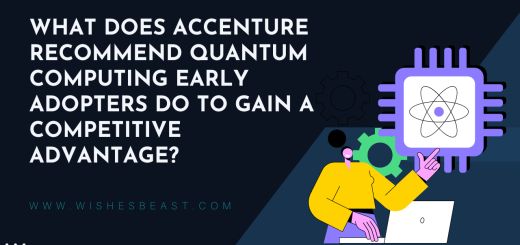TOP 8 TRENDS IN APPLICATION MANAGEMENT SERVICES

Introduction:
The role of Application Management Services (AMS) has become nothing short of indispensable. AMS functions as the linchpin in ensuring the seamless operation and optimal performance of software applications, which are the lifeblood of modern businesses. As enterprises continue to pivot towards digital solutions to enhance efficiency, productivity, and customer experiences, the demand for cutting-edge and effective application management services is experiencing unprecedented growth.
The digital transformation era has ushered in an era where businesses of all sizes are leveraging software applications to streamline their operations, connect with customers, and gain a competitive edge. These applications, ranging from enterprise resource planning (ERP) systems to customer relationship management (CRM) platforms, are the backbone of organizational processes. As the dependency on these applications intensifies, the need for robust and adaptive application management services has never been more critical.
This article embarks on a journey to dissect the top eight trends that are not only shaping but revolutionizing the future of Application Maintenance Services. Through a comprehensive exploration of these trends, we aim to unravel the intricate ways in which organizations are redefining their approach to managing and extracting maximum value from their software applications.
In essence, this exploration is not merely about tracking technological advancements; it is about understanding how these advancements are reshaping the very fabric of application management. From embracing cloud-native architectures to integrating artificial intelligence and machine learning, each trend is a strategic move towards ensuring that applications not only meet the demands of the present but are future-proofed against the ever-evolving technological landscape.
As we delve into these trends, it becomes evident that the evolution of Application Management Services is not a mere adaptation to change but a proactive response to the dynamic needs and challenges of the digital era. Let’s embark on this journey to uncover the transformative trends that are propelling application management into a new era of efficiency, agility, and innovation.
Cloud-native Application Management
One of the most transformative trends in the realm of Application Management Services is the shift towards cloud-native architecture. Cloud-native applications are designed to operate seamlessly in cloud environments, offering scalability, flexibility, and improved performance. This approach allows businesses to leverage the benefits of cloud computing, such as on-demand resource allocation and cost-efficiency. As organizations increasingly migrate their applications to the cloud, the demand for AMS providers capable of managing these cloud-native applications is on the rise.

AI and Machine Learning Integration:
The integration of Artificial Intelligence (AI) and Machine Learning (ML) into Application Management Services is another trend that is gaining momentum. AI and ML technologies empower AMS providers to automate routine tasks, predict potential issues before they occur, and enhance overall system performance. By leveraging predictive analytics and intelligent automation, organizations can not only reduce the burden on IT teams but also proactively address potential issues, ensuring a more reliable and efficient application environment.
Develops: Bridging the Gap Between Development, Security, and Operations
Develops, an evolution of the DevOps methodology, emphasizes the integration of security practices throughout the software development lifecycle. As security concerns become increasingly prominent in the digital landscape, AMS providers are incorporating DevSecOps principles to ensure that security is not an afterthought but an integral part of the application management process. This approach facilitates faster and more secure application development, with a focus on continuous monitoring and rapid response to security threats.
Microservices Architecture for Enhanced Scalability
Microservices architecture is gaining popularity as organizations seek more scalable and agile solutions. Unlike traditional monolithic applications, microservices divide applications into smaller, independently deployable services. This modular approach enables faster development cycles, improved scalability, and easier maintenance. AMS providers embracing microservices architecture can better support their clients in adapting to changing business requirements and ensuring a more responsive and scalable application infrastructure.
Edge Computing for Reduced Latency
The proliferation of Internet of Things (IoT) devices and the increasing demand for real-time processing have given rise to the importance of edge computing. Edge computing involves processing data closer to the source of generation, reducing latency and improving overall system responsiveness. AMS providers are incorporating edge computing capabilities into their services to meet the evolving needs of businesses relying on time-sensitive applications. This trend is particularly crucial in industries such as manufacturing, healthcare, and autonomous vehicles, where low latency is paramount.
Containerization and Orchestration with Kubernetes
Containerization, particularly through tools like Docker, has become a cornerstone in modern application development. Coupled with orchestration platforms like Kubernetes, containerization allows for the efficient deployment, scaling, and management of applications across diverse environments. AMS providers are increasingly adopting containerization and Kubernetes to simplify the deployment and management of applications, enhance resource utilization, and improve overall system reliability.
Automation of Repetitive Tasks and Operations
Automation is not a new concept, but its role in Application Management Services is evolving rapidly. The automation of repetitive tasks and operations is becoming a standard practice, enabling organizations to streamline their workflows and improve efficiency. AMS providers are leveraging automation to handle routine maintenance, monitor application performance, and rapidly respond to incidents. This not only reduces the workload on IT teams but also ensures consistent and reliable application management.
Focus on User Experience and Feedback Loops
In the era of customer-centricity, the user experience is a critical factor in the success of any application. AMS providers are increasingly placing emphasis on understanding user behaviour, collecting feedback, and iteratively improving applications based on user experiences. This iterative process, often referred to as a feedback loop, allows organizations to adapt their applications to changing user needs and preferences. By integrating user feedback into the application management process, AMS providers contribute to the creation of more user-friendly and effective software solutions.

Conclusion
As organizations continue to navigate the complexities of the digital landscape, the role of Mobile Application development becomes increasingly vital. The trends outlined in this article reflect the dynamic nature of the AMS domain, showcasing the industry’s commitment to innovation and adaptability. From the adoption of cloud-native architectures to the integration of AI and machine learning, each trend is a stepping stone towards a more efficient, secure, and user-centric future for application management.
In this rapidly evolving landscape, businesses must stay attuned to these trends to make informed decisions about them application management strategies. By embracing these trends, organizations can not only ensure the optimal performance of their applications but also position themselves to harness the full potential of emerging technologies in the ever-changing digital ecosystem.


